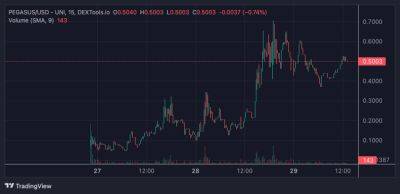Polygon proposes architecture for ‘Polygon 2.0,' including aggregator bridge
Polygon Labs, creator of the Polygon network, has proposed an architecture for its forthcoming “Polygon 2.0” project. The team suggested in a June 29 blog post that the new project should be made up of four different “layers” that will combine to create a web of networks ultimately connected to each other through Ethereum. If approved by validators, Polygon 2.0 will also feature an aggregator that makes bridge transactions “near-instant and atomic,” the team said.
1/ Today, we are excited to propose the Polygon 2.0 architecture, designed to provide unlimited scalability and unified liquidity, thus transforming Polygon into the Value Layer of the Internet!Read the blog or keep scrolling https://t.co/sShy6R1E6R pic.twitter.com/BTdwkri4nI
The team first announced Polygon 2.0 on June 12, claiming that the new project would establish “the value layer” of the internet. But details were scarce at that time. On June 20, co-founder Mihailo Bjelic proposed upgrading the current Polygon network to use zero-knowledge proofs, which he said was necessary in order to make the old network compatible with the “vision” of 2.0.
The June 30 post goes into greater detail about what Polygon 2.0 will look like. The foundation of the project will be the “staking layer” that currently exists. This consists of a “validator manager” contract on Ethereum plus an additional “chain manager” contract for each individual Polygon chain. In the future, new Polygon chains will be able to form by launching new chain manager contracts on Ethereum.
Connecting to this foundational staking layer will be an “interoperability layer” that contains bridges connecting each Polygon chain to one another through Ethereum. This layer will be secured by using zero-knowledge
Read more on cointelegraph.com






















